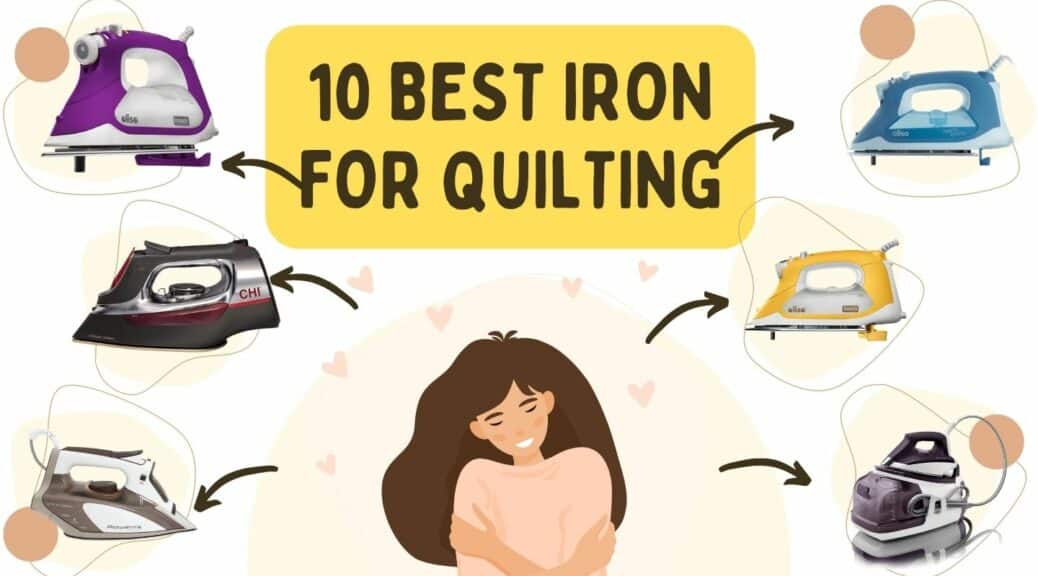
10 Best Iron for Quilting: Review
Are you quilting and have been frustrated with your iron? Are the areas that you should be able to get out wrinkles or creases not coming out no matter how hard you press?
If you answered yes to any of these questions, then you need to read this article because we are going to be discussing the best iron for quilting. In this article, we will be going over different types of irons, their benefits, and how to choose the best one for you.
After reading this article, you will understand which type of iron is best for your needs and be able to start quilting without any trouble!
What Is The Best Iron For Quilting?
There are a few things to consider when purchasing an iron for quilting. The size of the iron is important because you want to be able to maneuver it easily around your fabric. A smaller iron will be easier to control than a larger one. You also want to make sure that the iron has a steam function so that you can get rid of any wrinkles in your fabric before you start sewing.
The brand of the iron is also important. Some people prefer to stick with one brand for all of their sewing needs, while others are more open to trying new brands. There are a few well-known brands that make high-quality irons specifically for quilting, so it really comes down to personal preference.
Price is always a consideration when making any purchase, but it is especially important when buying an iron. You want to make sure that you are getting the best bang for your buck and that you are not overspending on an iron that you may only use occasionally. Luckily, there are a few great options out there that won’t break the bank.
In short, the best iron for quilting is the one that meets your specific needs and preferences. Make sure to do your research before making a purchase so that you end up with an iron that you will be happy with!
Rowenta DG8520 Perfect Steam Iron: Description, Pros & Cons
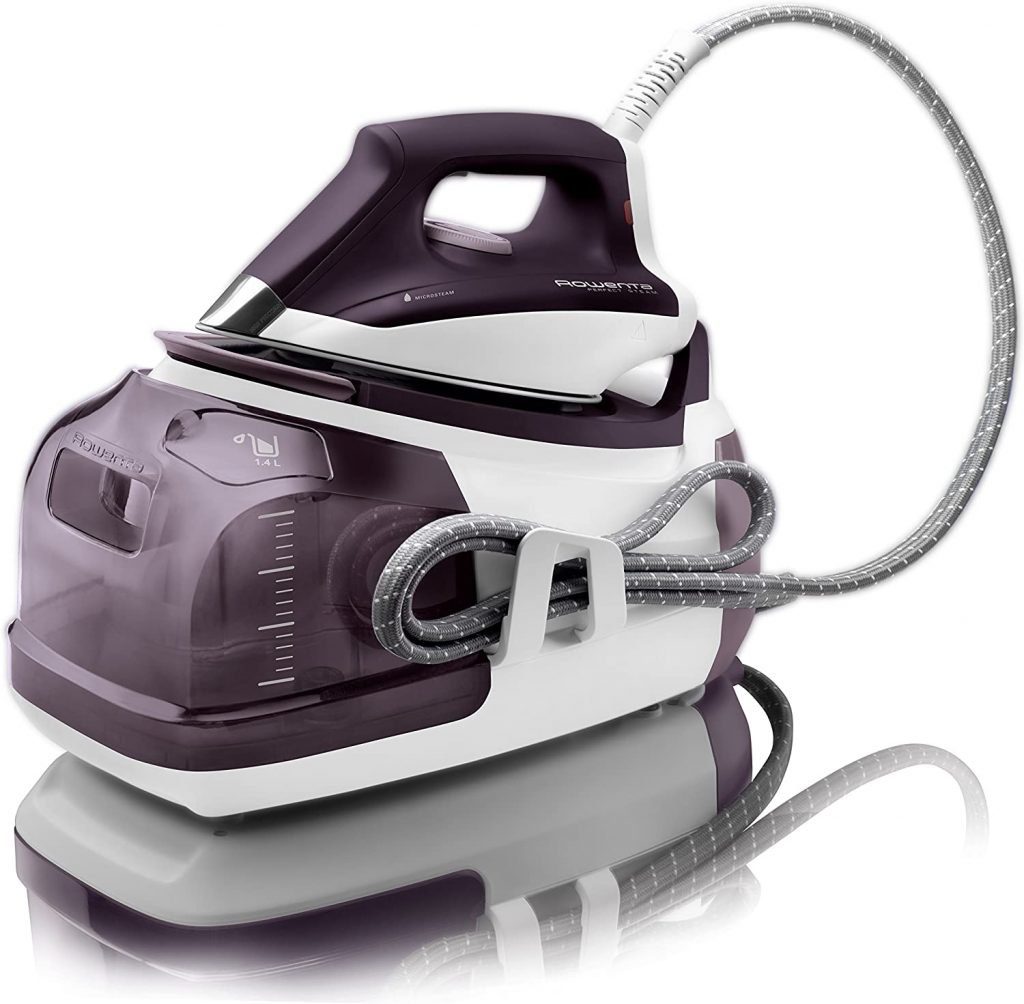
The Rowenta DG8520 Perfect Steam Iron is one of the best irons on the market. It features a ceramic soleplate, a steam burst function, and an automatic shut-off feature. It also has a comfortable grip and is very lightweight. The only downside to this iron is that it is a bit pricey. Overall, the Rowenta DG8520 Perfect Steam Iron is a great choice for those looking for a high-quality iron.
Pros:
- Ceramic soleplate
- Steam burst function
- Automatic shut-off feature
- Comfortable grip
- Lightweight
Cons:
- Pricey
Rowenta DW5080 Steam Iron: Description, Pros & Cons
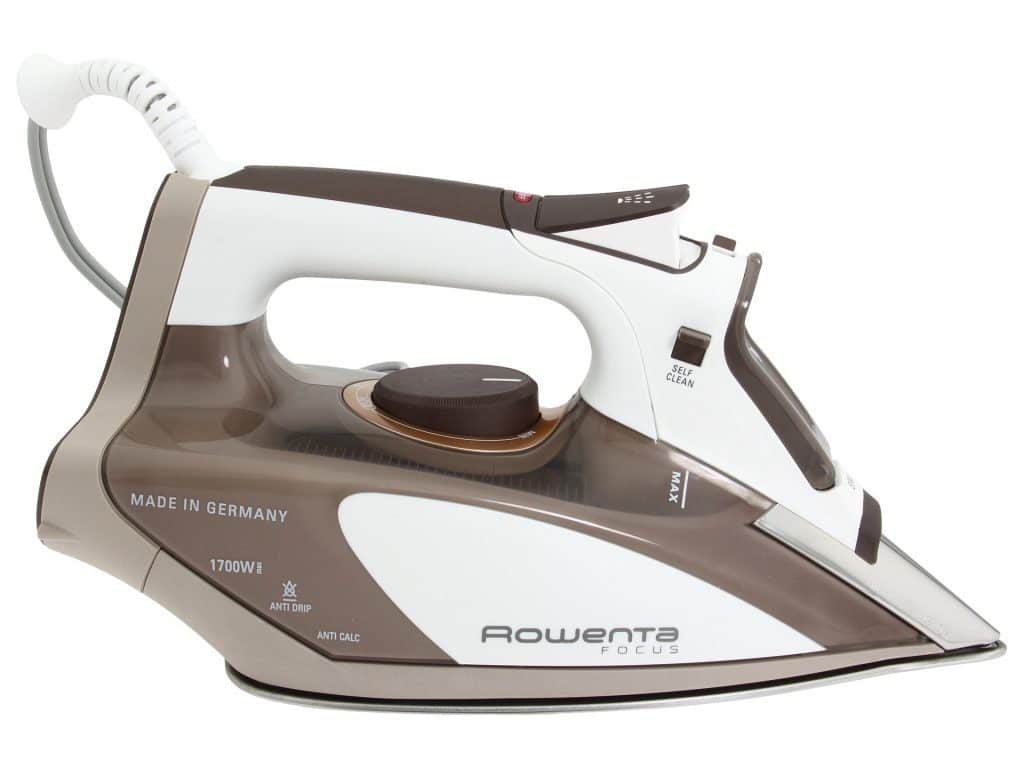
The Rowenta DW5080 Focus is a 1700-watt steam iron that comes with a ceramic soleplate. It has a precision tip that is great for getting into those hard-to-reach areas, as well as a 400 hole design that helps to distribute steam evenly. This iron also features an anti-drip system to prevent water from leaking out at lower temperatures, and it has a self-cleaning function to help keep the soleplate clean.
Some of the pros of this iron include the fact that it heats up quickly, produces a lot of steam, and has a very sturdy construction. Additionally, the precision tip is great for getting into those hard-to-reach areas, and the self-cleaning function is definitely a plus. However, there are also some cons to this iron. For example, some users have reported that it leaks water when turned up to higher temperatures, and others have said that the cord is too short. Overall, though, the Rowenta DW5080 Focus is a great option for those looking for a high-quality steam iron.
Oliso Pro TG1600 Smart Iron: Description, Pros & Cons
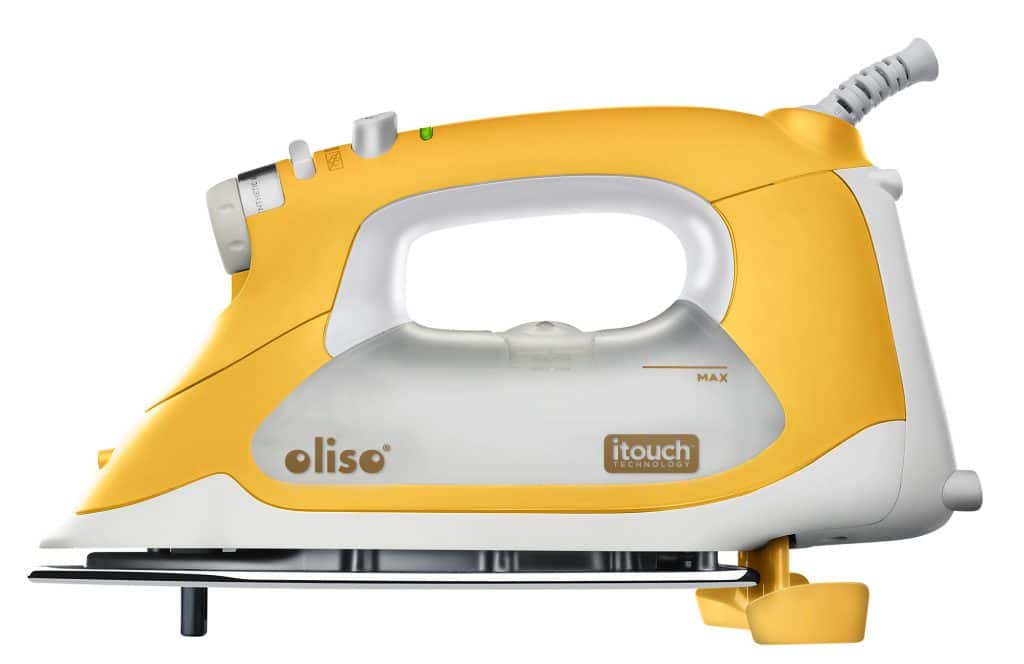
The Oliso Pro TG1600 Smart Iron is a high-end garment steamer that promises to make ironing faster and easier. It features a unique design that allows you to use it as both an iron and a steamer, making it a versatile tool for all your fabric care needs. The Oliso Pro TG1600 also comes with a host of features that make it one of the most advanced irons on the market today.
PROS:
- Unique design allows for use as both an iron and a steamer
- Advanced features make ironing faster and easier
- Heats up quickly and evenly
- Comes with a detachable water tank for easy filling
CONS:
- Some users find the price point to be too high
- Can be difficult to maneuver in tight spaces
- Requires regular descaling to prevent build-up of minerals
Oliso TG1050 Smart Iron: Description, Pros & Cons
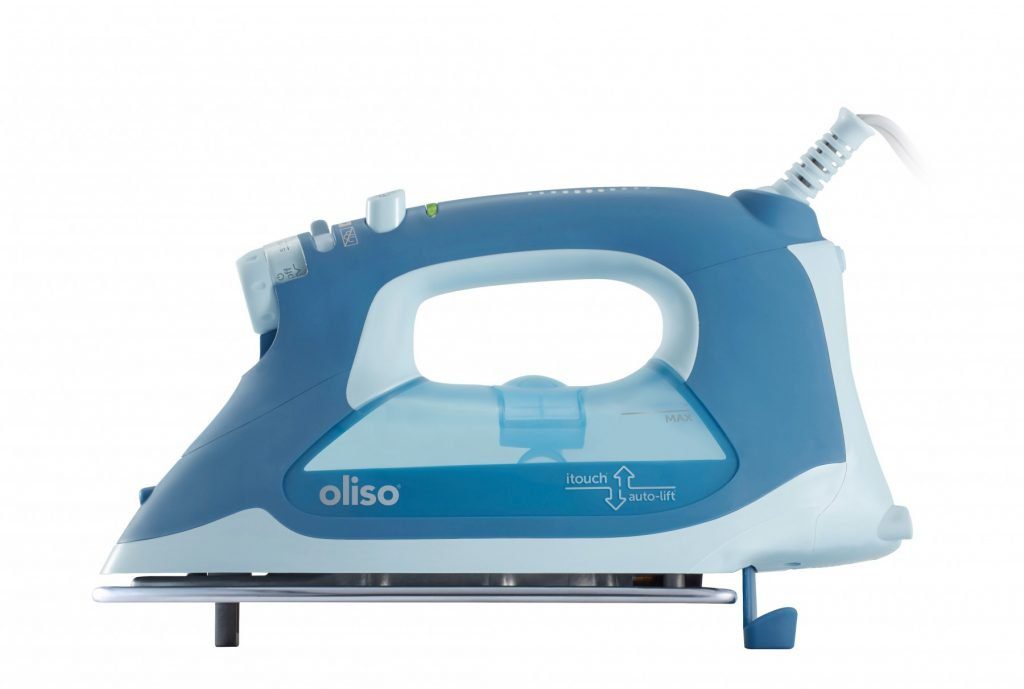
The Oliso TG1050 Smart Iron is a great choice for quilters. It has a ceramic soleplate that glides smoothly over fabric, and it also has a steam burst function that comes in handy when working with delicate fabrics. The Oliso TG1050 also features an automatic shut-off function, which is a great safety feature.
One of the best things about the Oliso TG1050 is that it’s very easy to use. The controls are clearly labeled and the iron heats up quickly. Another plus is that the Oliso TG1050 is lightweight, making it easy to maneuver around fabric.
There are a few drawbacks to the Oliso TG1050, however. First, the price is on the high end for irons. Additionally, some users have reported that the iron leaks water when tipped sideways, so it’s important to be careful when using this iron. Overall, though, the Oliso TG1050 is a good choice for quilters who are looking for a quality iron.
Oliso TG1100 Smart Iron With ITouch Technology: Description, Pros & Cons
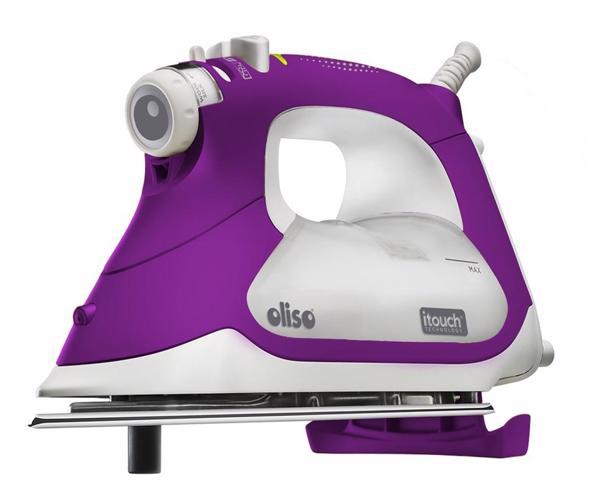
The Oliso TG1100 Smart Iron with iTouch Technology is a great choice for quilters. It has a lot of features that make it easy to use and it also comes with a carrying case. The only downside is that it is a bit pricey.
This iron has iTouch technology, which means that you can simply touch the handle to lower the temperature. This is great for quilters who are always adjust the temperature while they are ironing. The Oliso TG1100 also has an automatic shut-off feature, which is really helpful if you forget to turn off your iron.
The biggest downside to this iron is the price. It is one of the more expensive irons on the market. However, if you are looking for an iron with all the bells and whistles, this one is definitely worth considering.
CHI Professional Steam Iron: Description, Pros & Cons
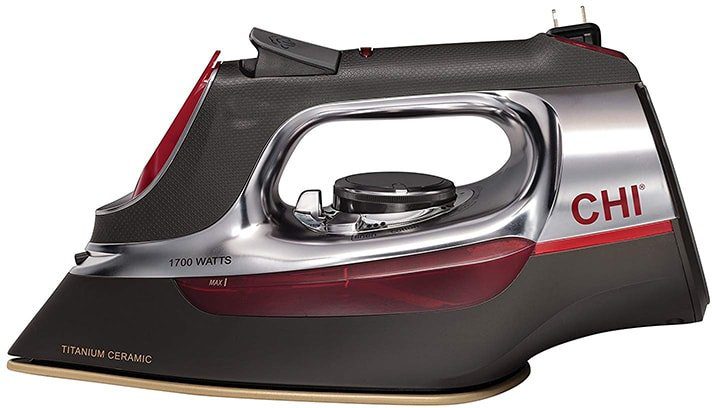
The CHI Professional Steam Iron is a great choice for those who are looking for an iron that can handle both light and heavy-duty projects. This iron has a ceramic soleplate that is specially designed to provide a smooth glide, making it perfect for both quilting and sewing. The CHI Professional Steam Iron also features a dial that allows you to adjust the steam output, as well as a self-cleaning function that helps to keep your iron in top condition.
PROS:
- Ceramic soleplate provides smooth glide
- Dial allows you to adjust steam output
- Self-cleaning function helps to keep your iron in top condition
CONS:
- Some users have reported that the cord is too short
- Others have said that the steam output is not as strong as they would like
Panasonic Cordless Steam Iron: Description, Pros & Cons
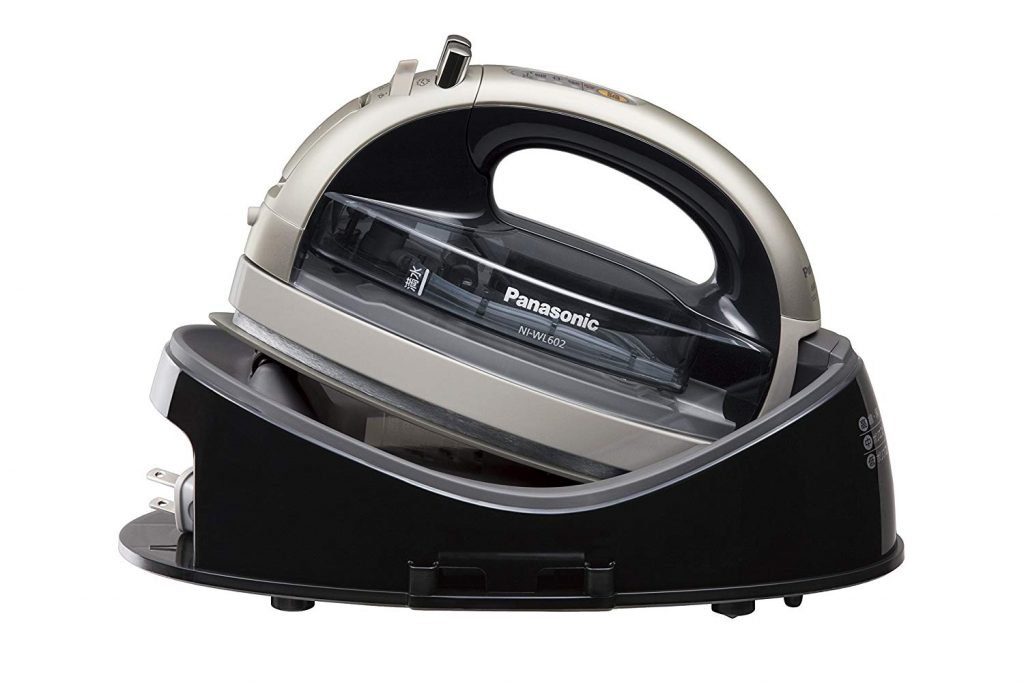
The Panasonic Cordless Steam Iron is a lightweight, powerful iron that is perfect for quilting. It has a ceramic soleplate that glides smoothly over fabric and a pointed tip that helps you get into those hard-to-reach areas. Plus, the cordless design means that you can move freely around your work area without having to worry about tangled cords.
The Panasonic Cordless Steam Iron also features an automatic shut-off feature that kicks in when the iron is left idle for too long. This is a great safety feature that will help to prevent accidents. The only downside to this iron is that it is not compatible with all types of fabric. So, if you are working with delicate fabrics, you may want to use another type of iron.
Rowenta DW6080 Steam Iron: Description, Pros & Cons
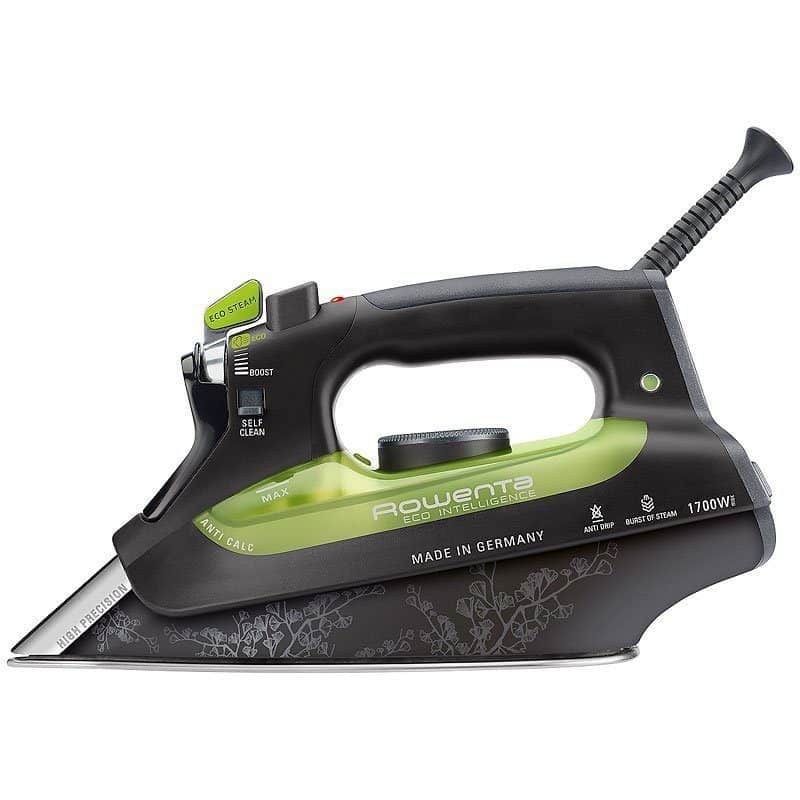
The Rowenta DW6080 is a steam iron that features a ceramic soleplate and an anti-drip system. It also has a three-way auto shut-off feature for safety. This iron produces a steady stream of steam and can be used on a variety of fabric types. It has a pointed tip for getting into hard-to-reach areas, and the handle is ergonomically designed for comfort.
PROS:
- The ceramic soleplate glides smoothly over fabric and provides even heat distribution.
- The anti-drip system prevents water from dripping onto fabric when the iron is not in use.
- The three-way auto shut-off feature ensures that the iron will turn off automatically if it is left on for too long.
CONS:
- Some users have reported that the iron leaks water when not in use.
- The cord is shorter than some other models, which may make it difficult to reach outlets that are far away.
Black And Decker Digital Advantage D2030: Description, Pros & Cons
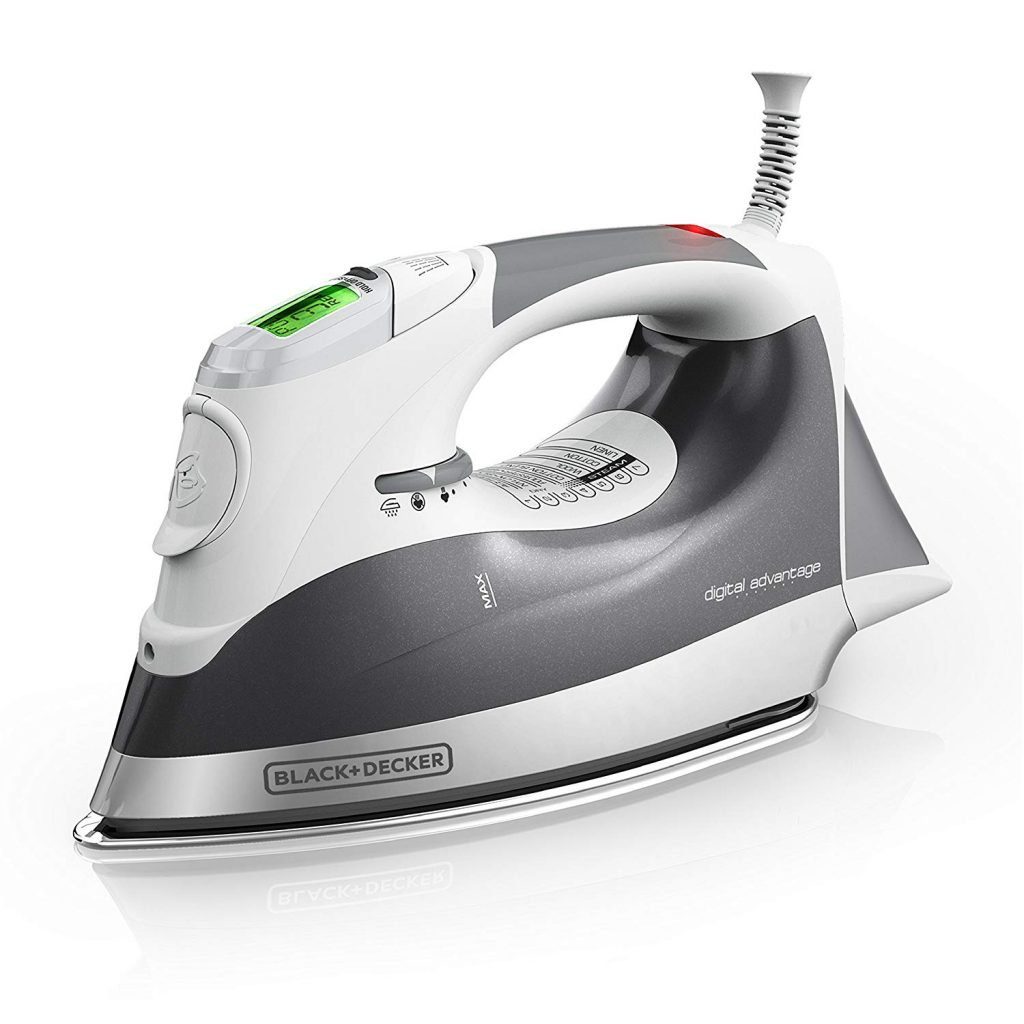
The Black and Decker Digital Advantage D2030 is a digital iron that features a smooth gliding ceramic soleplate, an adjustable steam lever, and a digital display that shows the selected temperature. This iron also has a self-cleaning function and can be used to both press and steam clothes.
The main advantage of this iron is its ceramic soleplate, which glides smoothly over fabric and helps to prevent sticking. The digital display is also a plus, as it makes it easy to see the selected temperature. Additionally, the self-cleaning function keeps the iron clean and free of mineral buildup.
However, there are a few disadvantages to this iron as well. First, it is on the expensive side. Additionally, some users have found that the steam output is not as strong as they would like.
Overall, the Black and Decker Digital Advantage D2030 is a good quality iron that has some great features. However, it is important to keep in mind its potential drawbacks before making a purchase.
Singer EPS2 Steam Press: Description, Pros & Cons
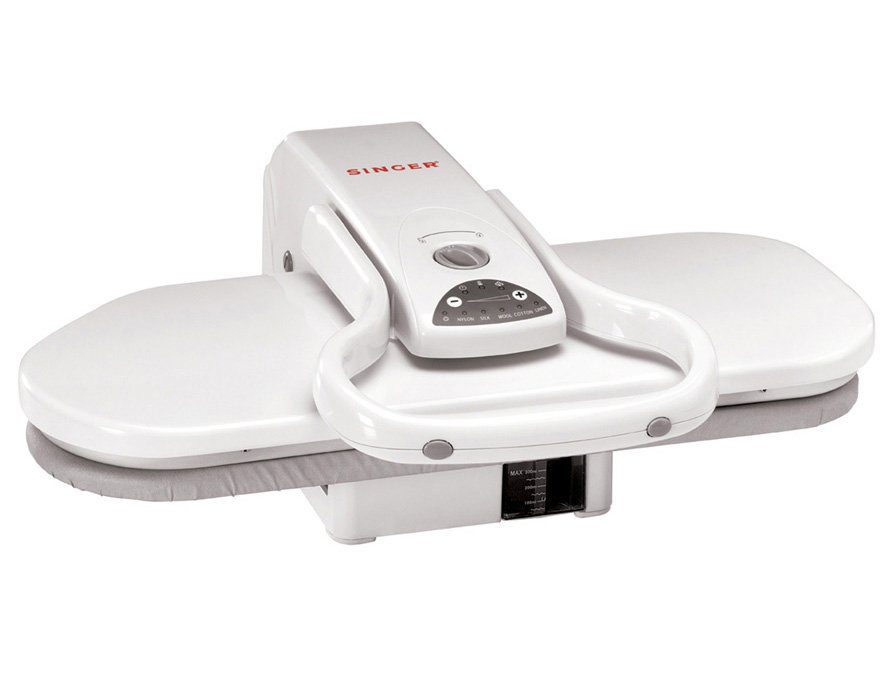
The Singer EPS2 Steam Press is a great tool for anyone who loves to quilt. It has a large surface area, making it perfect for bigger projects, and it comes with a steam function that makes it easy to press your fabric without having to set up an ironing board. The EPS2 also has a built-in cutter, so you can easily trim your fabric as you work.
There are a few downsides to the EPS2, though. First, it’s quite expensive, so it may not be the best option for those on a budget. Additionally, the steam function can sometimes be finicky, and the built-in cutter isn’t always precise. Overall, though, the Singer EPS2 Steam Press is a great tool for anyone who loves to quilt.
How To Choose The Best Iron For Quilting?
Choosing the best iron for quilting can be a daunting task, but it doesn’t have to be! Here are a few things to keep in mind when selecting an iron for your quilting projects:
- The size of the iron. You’ll want to make sure that the iron you choose is the right size for your needs. If you’re working on a large quilt, you’ll need a larger iron. Conversely, if you’re working on a small quilt or other project, you can get away with a smaller iron.
- The wattage of the iron. This is important because it will determine how quickly the iron heats up. A higher wattage means that the iron will heat up faster, which can be a real time-saver when you’re trying to get your quilt done in a hurry!
- The features of the iron. Some irons come with special features like steam vents or automatic shut-off. These can be helpful, but they’re not necessary for every quilter. Decide what features are most important to you and then look for an iron that has them.
With these factors in mind, you should be able to narrow down your choices and find the perfect iron for your quilting needs!
What Are The Features Of A Good Quilting Iron?
When it comes to quilting, having a good iron is essential. A good quilting iron will have a few key features that make it ideal for the task at hand. First and foremost, a good quilting iron will be powerful enough to get the job done quickly and efficiently. It should also have a steam function that can help to remove wrinkles and fabric lines. Additionally, a good quilting iron will have a pointed tip that can help to get into those hard-to-reach areas. Finally, a good quilting iron should be lightweight and easy to maneuver so that you can get the job done without any issues.
What Are The Different Types Of Irons Available?
There are three main types of irons available: flat irons, steam irons, and spray irons. Each type of iron has its own set of benefits and drawbacks.
Flat irons are the most common type of iron. They are simple to use and can be found in most homes. Flat irons work by heating the fabric and then pressing it between two flat surfaces. The heat from the iron smooths out the fabric and removes any wrinkles.
Steam irons are a bit more advanced than flat irons. They have a water reservoir that turns water into steam. The steam helps to loosen the fabric and makes it easier to press out wrinkles. Steam irons can be used on a variety of different fabrics, including delicate fabrics that might be damaged by a flat iron.
Spray irons are the most expensive type of iron. They have a pump that sprays water onto the fabric before it is pressed. This pre-treatment helps to remove tough wrinkles. Spray irons can be used on all types of fabrics, but they are especially good for delicate fabrics that might be damaged by a flat iron or steam iron.
What Are The Features To Look For In A Good Quilting Iron?
There are several features to look for when purchasing a quilting iron. The most important feature is the wattage. A good quilting iron will have at least 1000 watts of power. This will ensure that the iron heats up quickly and evenly.
Another important feature to look for is an automatic shut-off function. This is a safety feature that will turn the iron off after it has been idle for a certain amount of time. This is important in case you forget to turn the iron off after use.
Another nice feature to have is a steam setting. This allows you to add a little moisture to the fabric while you are pressing it, which can help to remove wrinkles.
Finally, make sure that the iron comes with a warranty. This will protect your purchase in case there are any defects with the product.
How Do You Use An Iron For Quilting?
Ironing is a necessary part of the quilting process. You need to have a good iron that can get nice and hot, so that you can press your fabric and get those wrinkles out. But with so many different irons on the market, it can be hard to know which one is the best for quilting.
Here are a few things to look for when choosing an iron for quilting:
- First, you want an iron that gets nice and hot. This is important because you need to be able to press your fabric and get those wrinkles out.
- Second, you want an iron that has a steam function. This will come in handy when you are trying to remove stubborn wrinkles from your fabric.
- Third, you want an iron that is lightweight and easy to maneuver. This is important because you will be using it a lot and you don’t want to get tired arms from holding a heavy iron.
Now that you know what to look for in an iron, you can start shopping around for the perfect one for your needs. There are a lot of great options on the market, so take your time and find the perfect one for you.
What Are Some Tips For Choosing The Best Iron For Your Needs?
There are a few things you’ll want to keep in mind when shopping for an iron. First, consider what type of fabric you’ll be working with most often. If you’re mainly working with delicate fabrics, you’ll want an iron that has a lower temperature setting and produces less steam. On the other hand, if you’re working with thicker fabrics like denim or linen, you’ll need an iron that gets hot enough to press those fabrics without damaging them.
Another important factor to consider is the size of the iron. A smaller iron might be more convenient to use, but it will take longer to press larger areas of fabric. A larger iron will cover more surface area faster, but it can be more unwieldy to use. Consider what size will work best for the types of projects you typically do.
Finally, think about any special features that might be useful to you. Some irons come with a spray mist function that can be helpful when working with difficult-to-press fabrics. Others have a self-cleaning function that keeps the iron clean and free of mineral build-up. Consider which features would be most helpful to you and look for an iron that has them.
What To Look For When Buying A Quilting Iron
When it comes to quilting, having a good iron is essential. A quality iron can make all the difference in the appearance of your finished project. With so many different irons on the market, it can be hard to know which one is right for you. Here are a few things to look for when purchasing a quilting iron:
- Steam power: The amount of steam an iron produces is important for getting wrinkles out of fabric. If you plan on doing a lot of quilting, look for an iron with high steam output.
- Iron type: There are two main types of irons: steam and dry. Dry irons don’t produce any steam, so you’ll have to press your fabric before wetting it down. Steam irons will wet and press your fabric at the same time.
- Sole plates: The sole plate is the part of the iron that actually comes into contact with the fabric. Some sole plates are coated with non-stick material, which can help prevent fabric from sticking to the iron. Others have special grooves or patterns that help distribute heat evenly over the fabric.
- Heat settings: Most irons have multiple heat settings, so you can adjust the temperature depending on the fabric you’re working with. Delicate fabrics like silk require a lower heat setting, while thicker fabrics like denim can handle a higher setting.
- Durability and safety: Quilting irons get hot, so it’s important to choose one that’s durable and won’t break easily. Look for an iron with a sturdy construction and smooth operation. Also, be sure to choose an iron with automatic shut-off in case you forget to turn it off when you’re done using it.
- Weight: Heavier irons tend to be more stable and easier to use than lighter ones. If you plan on doing a lot of quilting, look for an iron that’s not too heavy so you won’t get tired while using it.
- Controls: Some irons have digital controls that make it easy to adjust the temperature and other settings. Others have dials or knobs that you’ll need to adjust by hand. Choose whichever style you feel most comfortable using.
Frequently Asked Questions: Iron For Quilting
What is the best type of iron for quilting?
There are a few different types of irons that can be used for quilting, but the best type to use is a steam iron. Steam irons have a built-in water reservoir that emits bursts of steam while you’re ironing. This helps to remove wrinkles quickly and easily.
How do I know if my iron is hot enough for quilting?
The best way to test the heat of your iron is to put it on the „steam“ setting and let it heat up for a few minutes. Once it’s heated up, hold it close to the fabric you’ll be quilting with. If the fabric starts to sizzle, then your iron is hot enough and ready to use.
What temperature should I set my iron to for quilting?
The ideal temperature for quilting is between 385-400 degrees Fahrenheit. This will ensure that your fabric stays smooth and wrinkle-free.
Which Iron Is Better For Quilting – Steam Or Dry?
The answer to this question depends on your personal preferences and what kind of quilting you plan on doing. If you are looking for an iron that will give you a lot of control over the fabric, then a steam iron might be a better option. Steam irons can be used to press seams open or to flatten out wrinkles. Dry irons, on the other hand, are better for delicate fabrics and can be used to press appliqués or bias tape in place.
Some people prefer steam irons because they feel like they have more control over the fabric. With a steam iron, you can press seams open or flatten out wrinkles. You can also use a steam iron to set pleats or remove fabric from the quilt top.
Dry irons are better for delicate fabrics, such as appliqués or bias tape. They can also be used to press quilt blocks or nested seams. If you are working with a delicate fabric, it is best to use a dry iron so you don’t risk damaging the fabric.
Is An Iron And A Steamer The Same Thing?
No, an iron and a steamer are not the same thing. An iron is used to press clothes and remove wrinkles, while a steamer is used to remove wrinkles without actually pressing the fabric. Both have their own benefits and drawbacks, so it really depends on your needs as to which one you should use.
An iron uses heat to press clothes and remove wrinkles. It’s a quick and easy way to get your clothes looking nice and presentable. However, if you’re not careful, you can easily burn your clothes with an iron. It’s also important to know how to properly use an iron – too much pressure or heat can damage your clothes.
A steamer uses steam to remove wrinkles from clothes. It’s a gentler way to remove wrinkles, and it’s great for delicate fabrics that can’t be pressed with an iron. However, steamers can be more expensive than irons, and they can take longer to remove wrinkles.
Can Steam Iron Be Used Without Water?
No, steam iron cannot be used without water. Steam iron needs water to produce steam. The steam is what helps to remove wrinkles from clothes. When the water runs out, the steam iron will no longer be able to produce steam and thus will not be able to press clothes.
Why Does My Iron Leak?
There are a few reasons why your iron might be leaking. The most common reason is that the water reservoir isn’t full. If there’s not enough water in the iron, it will start to leak. Another possibility is that the steam vents are clogged. The steam vents release the pressure in the iron, so if they’re clogged, the pressure will build up and cause the iron to leak.
Finally, it could be that the soleplate (the bottom part of the iron) is damaged. If there’s a crack or chip in the soleplate, water can seep through and cause leaking.
If your iron is leaking, the first thing you should do is check the water reservoir. Make sure that it’s filled to the correct level and that there aren’t any leaks in the reservoir itself. If everything looks good there, move on to checking the steam vents.
Use a needle or other sharp object to clear out any lint or debris that might be blocking them. If that doesn’t fix the problem, it’s likely that the soleplate is damaged and will need to be replaced.
How Do I Clean My Iron?
You should clean your iron regularly to prevent rusting and build-up of minerals from water. You can clean your iron with a damp cloth and a mild detergent. Be sure to unplug the iron before you start cleaning it.
First, remove any residual water from the iron by setting it to the „steam“ setting and allowing it to heat up for a few minutes. Then, turn the iron off and unplug it.
Next, dampen a clean cloth with water and a mild detergent. Gently wipe down the soleplate of the iron, being careful not to get the cord or other electrical components wet. You may need to use a little more elbow grease if there is any tough residue on the soleplate.
Once you’ve wiped down the soleplate, use a dry cloth to wipe away any moisture. Finally, plug in the iron and turn it on to the „low“ setting for a few minutes to help evaporate any remaining water.
Does Steam Ironing My Clothes Clean Them?
No, steam ironing your clothes will not clean them. However, it can help to remove wrinkles and make your clothes look neater. Steam ironing is a great way to freshen up your clothes and remove any unwanted creases.
Should I Iron My Clothes Inside Out?
Ironing your clothes inside out is a great way to protect them from damage. The fabric on the inside of your clothing is usually weaker than the fabric on the outside, so by ironing them inside out, you’re less likely to cause any rips or tears. Additionally, ironing your clothes inside out can also help to prevent them from getting wrinkled as quickly.
Of course, there are some exceptions to this rule. If you’re ironing a delicate garment, for example, you’ll want to be extra careful not to damage it. In these cases, it’s best to follow the instructions on the care label. Generally speaking, though, ironing your clothes inside out is a great way to keep them looking their best.
What’s The Best Type Of Water To Use In An Iron?
There are a few different types of water that you can use in an iron, but the best type of water to use is distilled water. This is because distilled water doesn’t have any minerals in it that could leave spots on your clothes or build up inside your iron. You can buy distilled water at most grocery stores, or you can make it yourself by boiling water and then letting it cool.
Another type of water that you can use in an iron is filtered water. This is also a good option because it doesn’t have as many minerals as tap water does. However, it’s important to make sure that your filter is clean before using it, otherwise you could end up with spots on your clothes or a build-up of minerals in your iron.
The last type of water that you can use in an iron is tap water. This is not the ideal option because it can contain minerals that will leave spots on your clothes or build up inside your iron. However, if you don’t have access to distilled or filtered water, tap water will still work. Just be sure to empty out your iron after each use and wipe it down with a clean cloth to remove any mineral deposits.
Can I Remove Iron Marks From Clothing?
There are a few different ways that you can remove iron marks from clothing. The first way is to use a product called Iron Out. This product can be found at most hardware stores and it will remove the marks quickly and easily. The second way is to use vinegar. Simply soak the affected area in vinegar for a few minutes and then wash the clothing as usual. The third way is to use salt. Again, simply soak the affected area in salt water for a few minutes and then wash the clothing as usual.
If you’re looking for a quick and easy way to remove iron marks from clothing, Iron Out is your best bet. However, if you’re looking for a more natural solution, vinegar or salt water will do the trick just as well.
Conclusion
We hope you enjoyed our reviews of the best irons for quilting. If you have any questions or comments, please feel free to leave them below. We would love to hear from you!